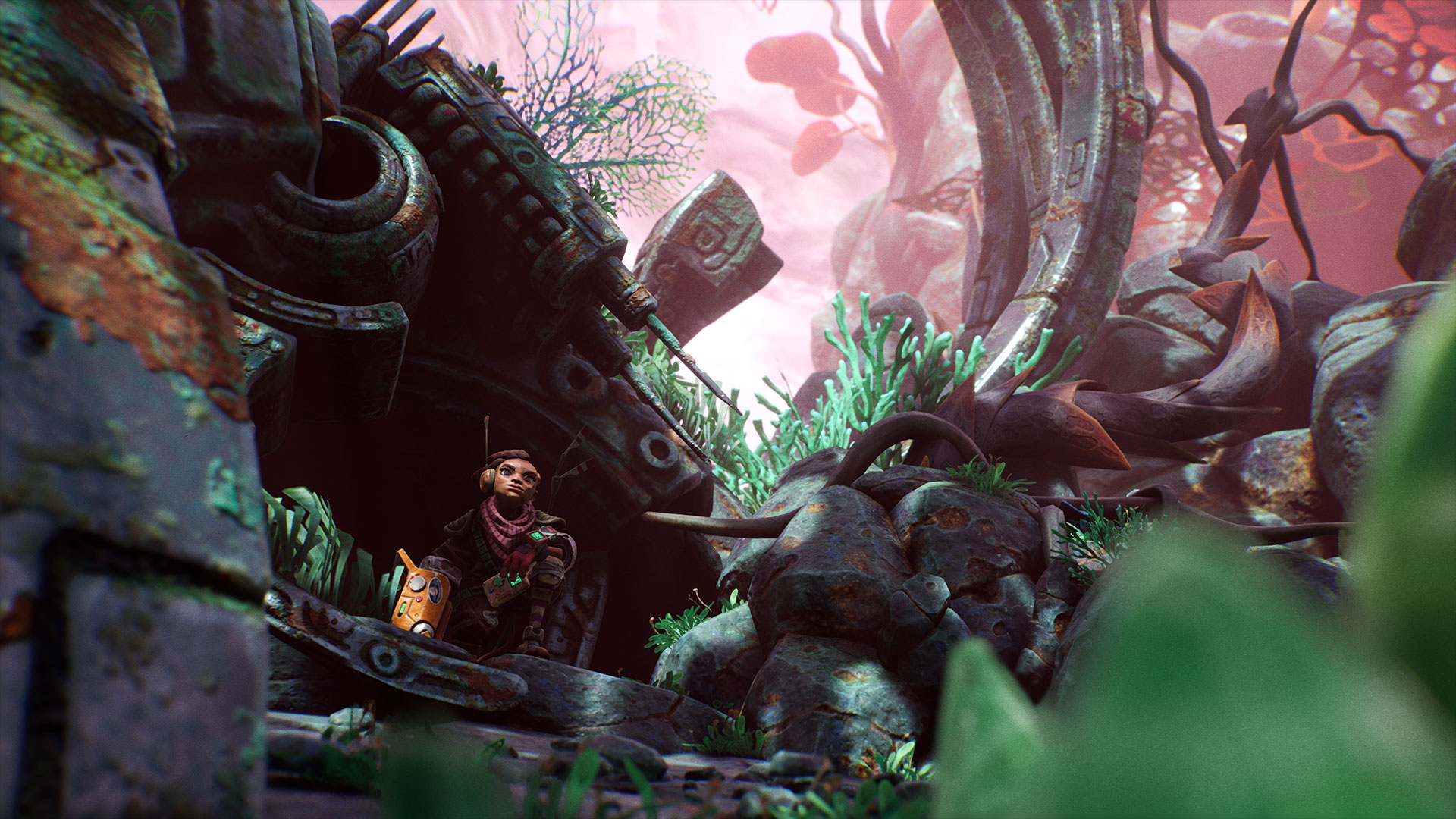GamesRadar+ Verdict
Rani and Becks are an appealing duo to share adventures with, but they deserve something more exciting than The Gunk has to offer.
Pros
- +
Intriguing story and characters
- +
Hoovering up the scenery and gunk is satisfying
Cons
- -
A limited range of challenges and puzzles
- -
Cleaning up eventually becomes a chore
- -
Largely pointless resource gathering and upgrades
Why you can trust GamesRadar+
I’ve visited plenty of unknown planets in games. Often as a sole explorer, quietly picking through ruins or jungles, alone with my thoughts as I figure out the path forward. The Gunk is a bit like that too, except you’re never quite alone. It’s like investigating a remote alien landscape with your mum looking over your shoulder, telling you to be careful or that it’s time to come home and eat.
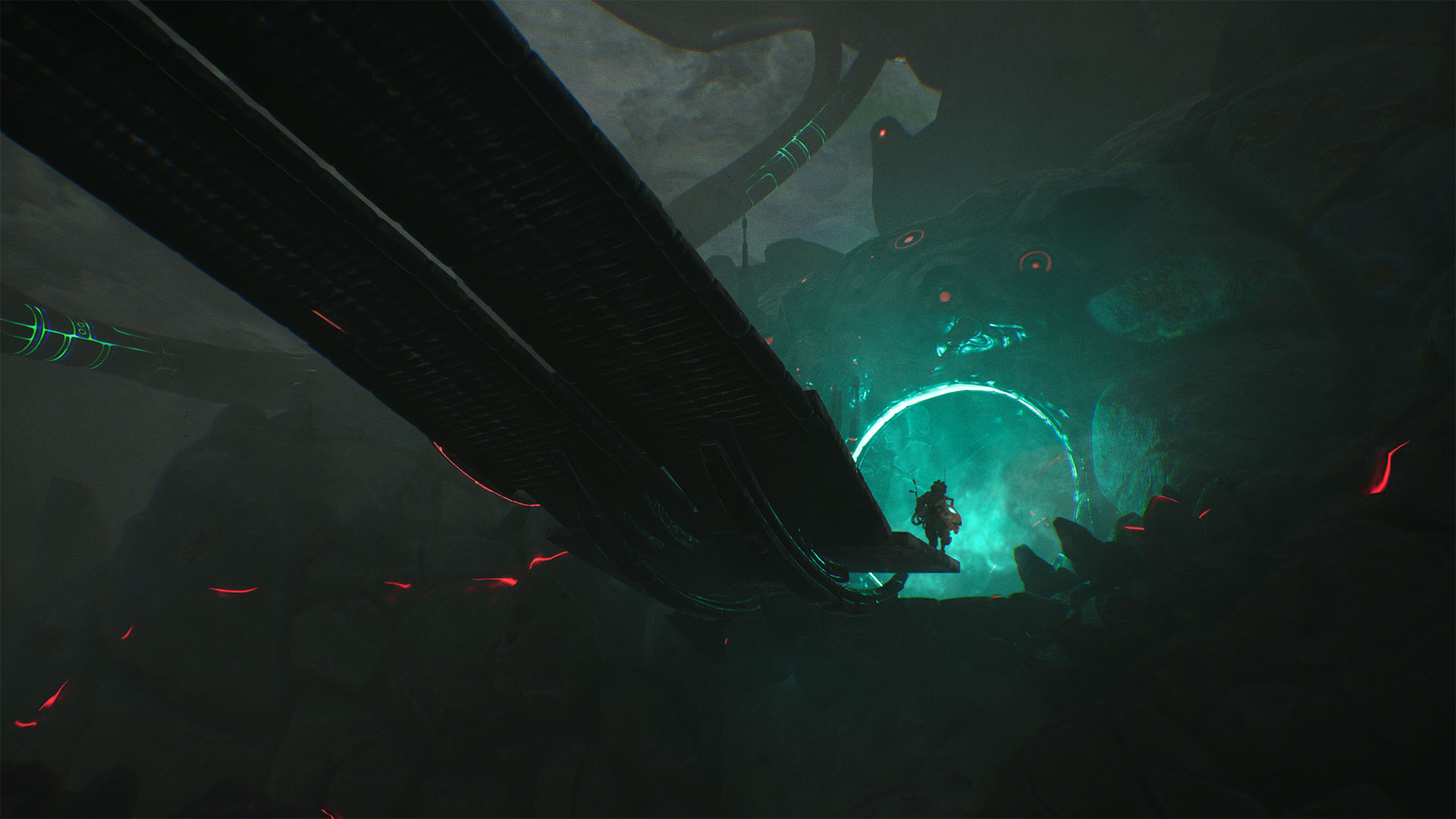
Platform(s): Xbox Series X, Xbox One, PC, Game Pass
Release date: December 16
Developer: Image and Form Games
Publisher: Thunderful
Time to complete: 6 hours
Indeed, the game’s two main characters, partners Rani and Becks, have an almost parent and child-like relationship at times. They’ve landed their rickety ‘Bunny’ spaceship on this uncharted world to seek out an energy source they detected from space, in the hope it might be valuable enough to pay off their mountain of debt. Rani - the player character - is an excitable explorer. Impulsive and adventurous, she relishes the opportunity to dive into the local caves and shrubbery. Becks is practical and responsible, reluctantly assuming a maternal role. Wary of fieldwork, she stays with the ship, reminding Rani through her earpiece not to be reckless.
What could be a silent, Metroid-style dive into buried secrets thus becomes something slightly different. The Gunk is as much about the bond between this duo and their difficult situation as what they find. The act of exploring is pushed and pulled between their two perspectives - a simple twist on an old formula that’s easy to appreciate. It’s a shame then that the planet itself renders their adventure a little flat.
Prepare to Dyson
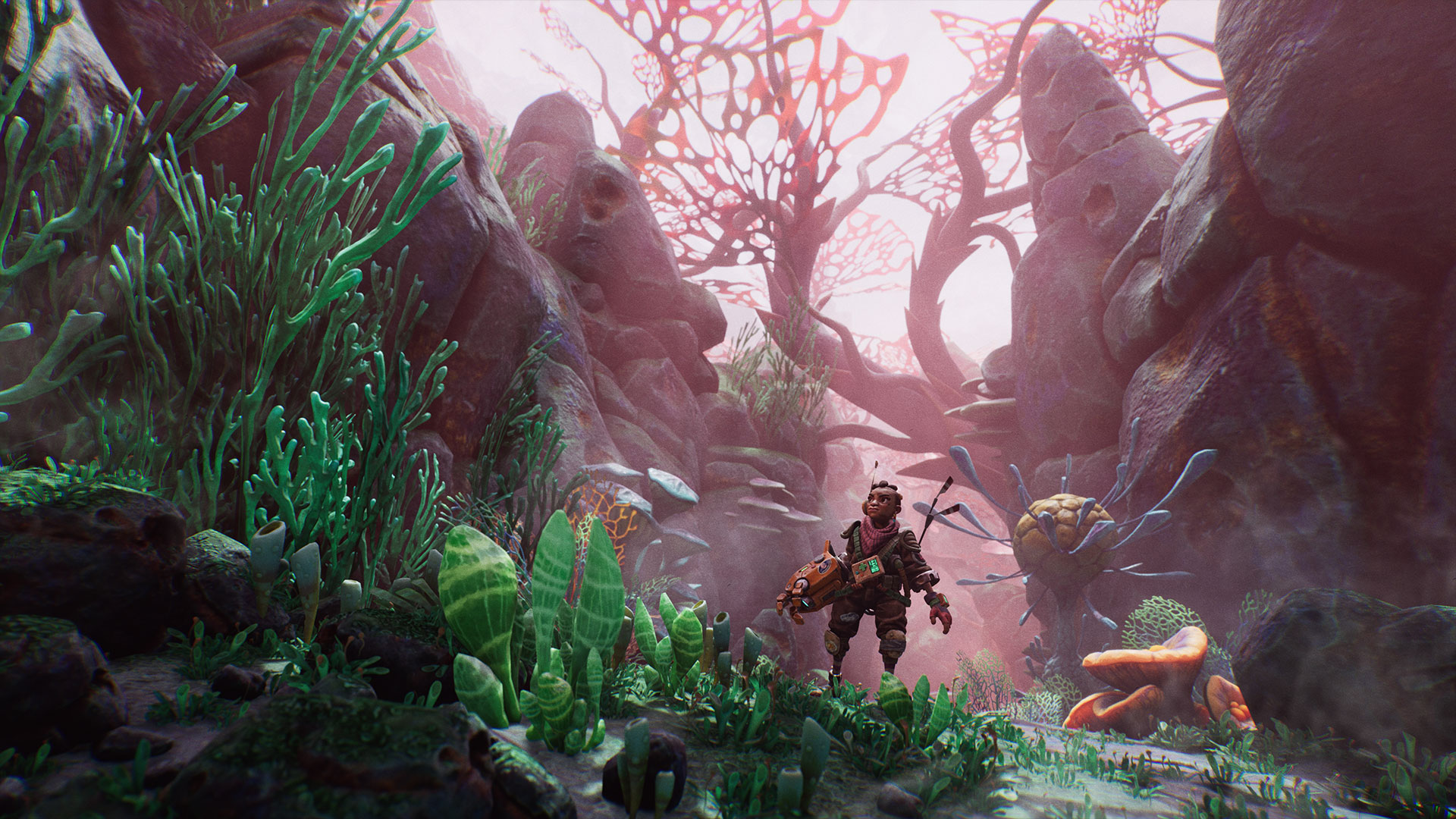
Your progress through the jungles and caves is mainly basic platformer stuff, with some minor puzzles, and relies heavily on Rani’s chunky metal arm attachment, which she affectionately calls ‘Pumpkin’. Pumpkin is equipped with a scanner that can tell you the composition or provenance of plants and machines, and can fire an energy shot that’s useful for dislodging far away objects. Its primary function, however, is a kind of cross between a vacuum cleaner and a black hole. At the squeeze of a trigger, it inhales infinite quantities of small objects that disappear into its belly, mulched down into their atomic essence.
As you can imagine, this is great for gathering resources, whether vegetable or mineral, which can then be used to upgrade Rani’s equipment back at the ship. A glove-like attachment around the nozzle also means larger objects can be pulled in, grabbed, then chucked away again - including small assailants and the explosive seeds of a certain plant you’ll need to clear obstructions. But as with any good vacuum cleaner, it’s mainly good for cleaning up muck - the titular gunk, which is a snotty black goo that smothers the environment, decolorizing and sapping the life out of everything around it. Sometimes it’s simply there, in globular masses, blocking the way. Other times it floats around menacingly, or births hostile creatures that need to be destroyed.
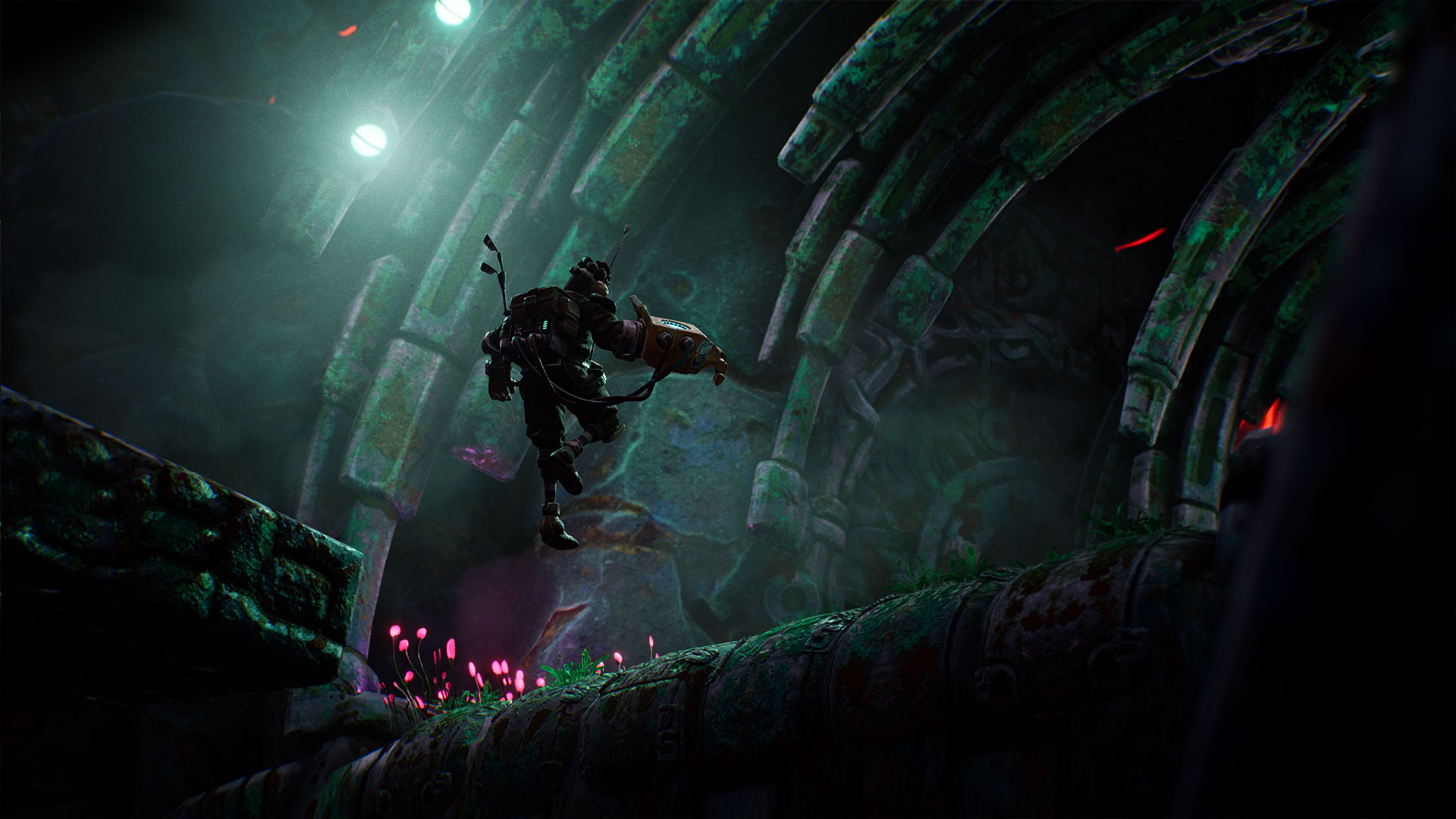
There’s definitely a certain pleasure in sucking up your surroundings in The Gunk. Weeds and chunks of ore put up just enough resistance to ensure it’s satisfying when they finally wrench from their moorings, as it is when you pluck an enemy projectile from its flightpath then pump it back to sender. As for removing the gunk, it’s like getting right into the corners of a grimy floor with a vacuum cleaner nozzle and seeing a pristine surface re-emerge from beneath. Or perhaps more accurately, like the feeling a surgeon gets when cleaning out an infection, removing the rot that’s weakening the patient. And when you absorb the last troublesome speck, The Gunk pulls that old Okami trick of showing nature burst back to life with abundant color - reward for a job well done.
Cleaning Rota
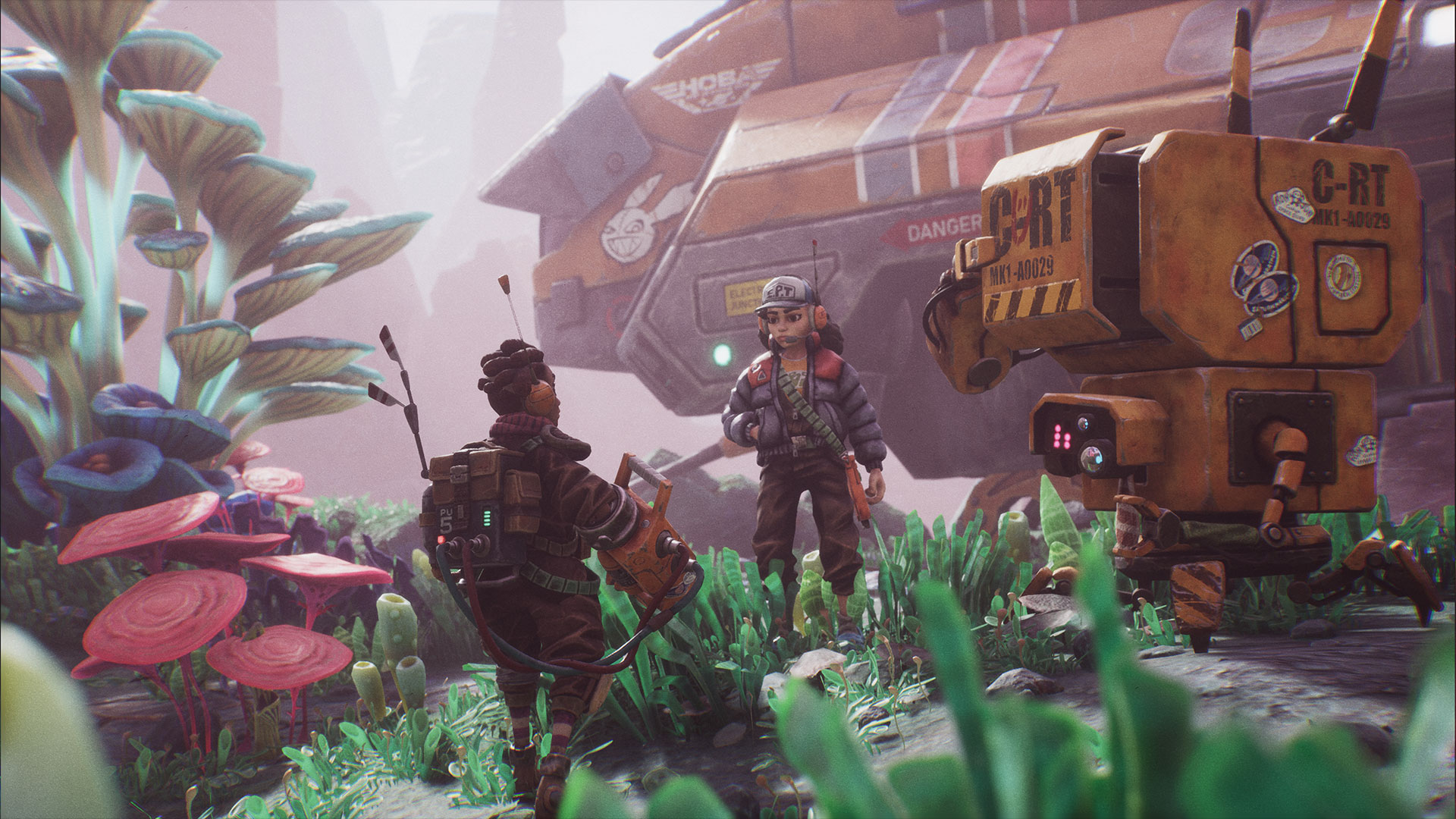
The problem is that it does start to feel like a job after a while, along with the rather workmanlike platform routines around it. What at first feels like a rich proposition reveals its limitations surprisingly quickly. Early on, for example, you’re introduced to a species of seed that transforms into huge mushrooms if you throw it into an energy pool, enabling you to reach new areas. I lost count of how many times this trick is repeated throughout the game, and while sometimes there may be minor obstacles separating the two, often it’s simply a case of grabbing the seed and lobbing it at the target.
In many other ways, too, the stakes and the demands of your expedition hardly evolve until the game is on its final stretch, like a Zelda dungeon stuck in second gear. Suck up nearby gunk and colorful plants and mushrooms blossom. These function as steps, ladders, and bridges to further ground (including one that looks ominously like a great unfurled tongue), but none have interesting properties beyond that. The denizens of the gunk, meanwhile, only come in three flavors, and while their numbers grow towards the end, dispatching them is a one-dimensional task.
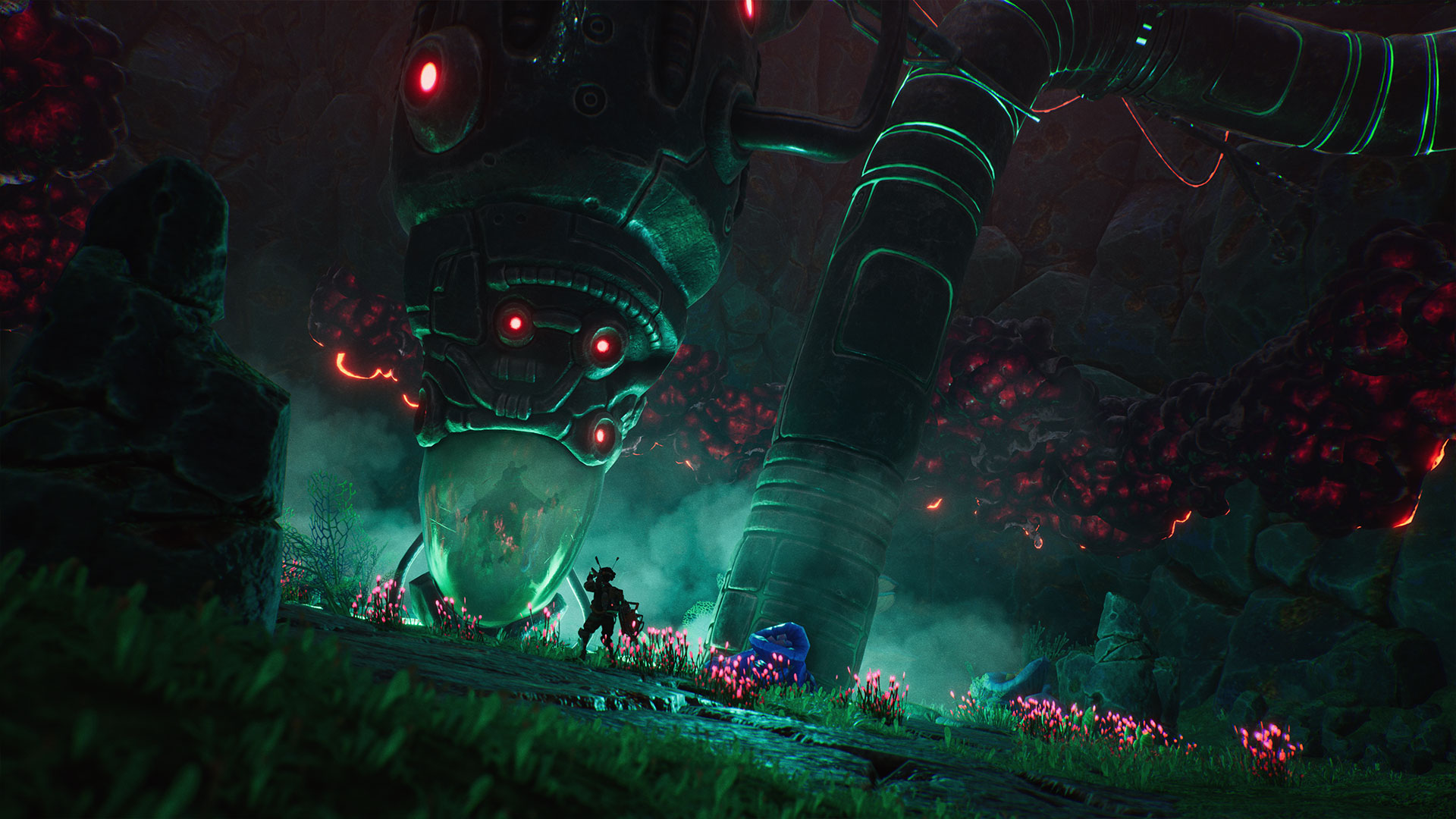
I started to lose the exploration bug after a couple of hours, once I realized I wasn’t going to stumble on much that was genuinely fresh. It’s strange that there aren’t even many different types of plants to scan beyond the opening sections, and that so many bizarre and potentially intriguing items can’t be scanned at all. This really seemed like an omission when I stumbled into an alien facility and only a couple of bits of furniture could be examined to tell me anything about the place. It’s doubly frustrating that Rani constantly expresses her amazement at each new discovery, while the game’s systems refuse to reward my curiosity.
I couldn’t help comparing this experience to that of Journey to the Savage Planet, which offers a similarly colorful world to explore under similar circumstances. Savage Planet is a bigger game, so it’s not an entirely fair comparison, but it’s hard not to feel that The Gunk is missing some of the intrigue and playfulness Typhoon Studios injected into its world’s discoveries.
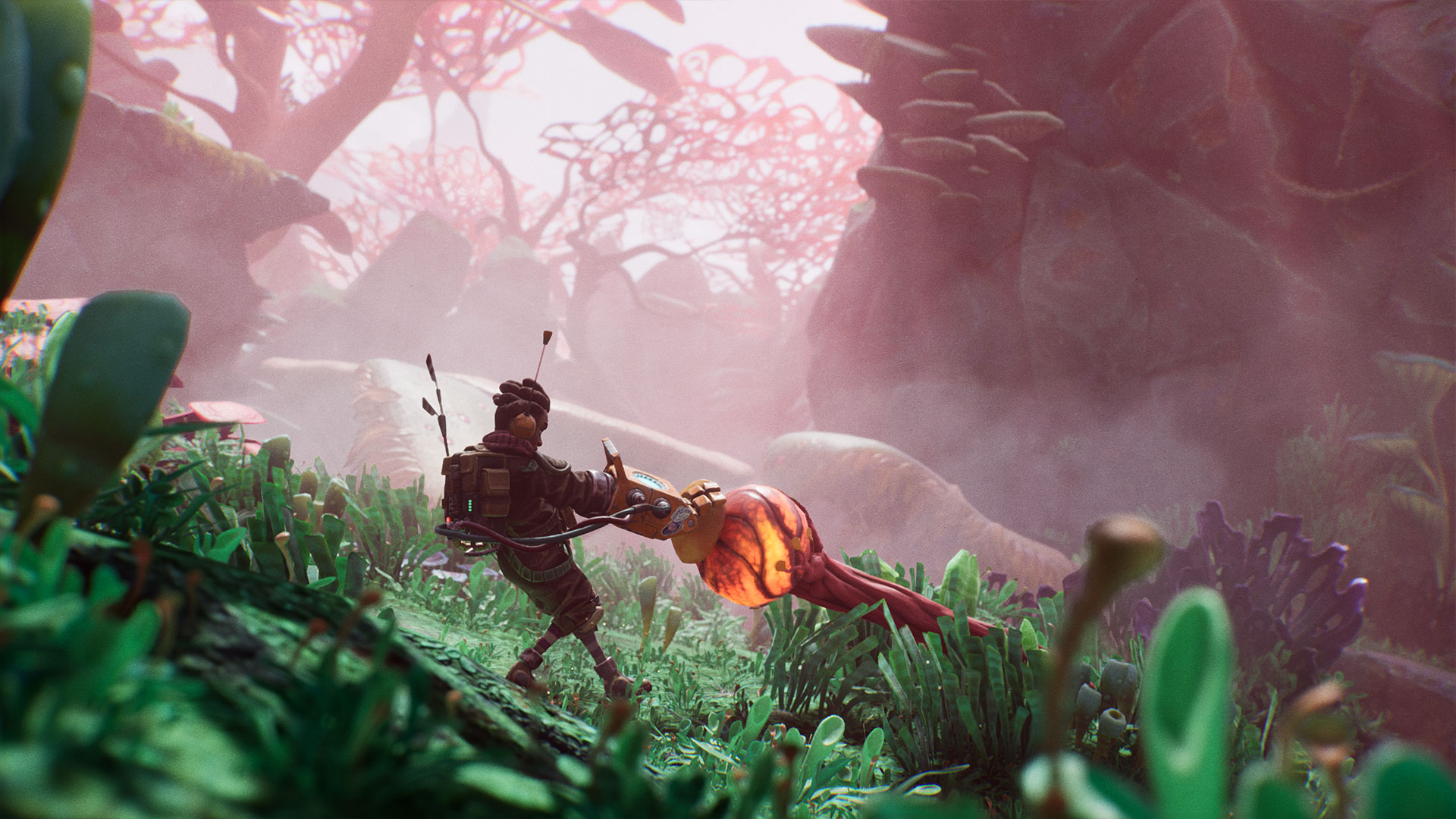
Alternatively, it would help if the loop of resource farming and upgrading was as compelling as that in Image & Form’s own Steamworld Dig 2. In many ways, The Gunk is comparable, but mining your way through Dig 2 feels more purposeful. Here, seeking out secrets off the beaten path merely leads to more generic resources, and since most upgrade unlocks are linked to how many objects you’ve scanned, they’re optional and barely make a difference. Also, clearing gunk simply isn’t as engaging an activity as mining. Rather than chipping out a path into deeper mysteries, it restores normality, and becomes more like a household chore as the adventure proceeds.
Desperate Measures
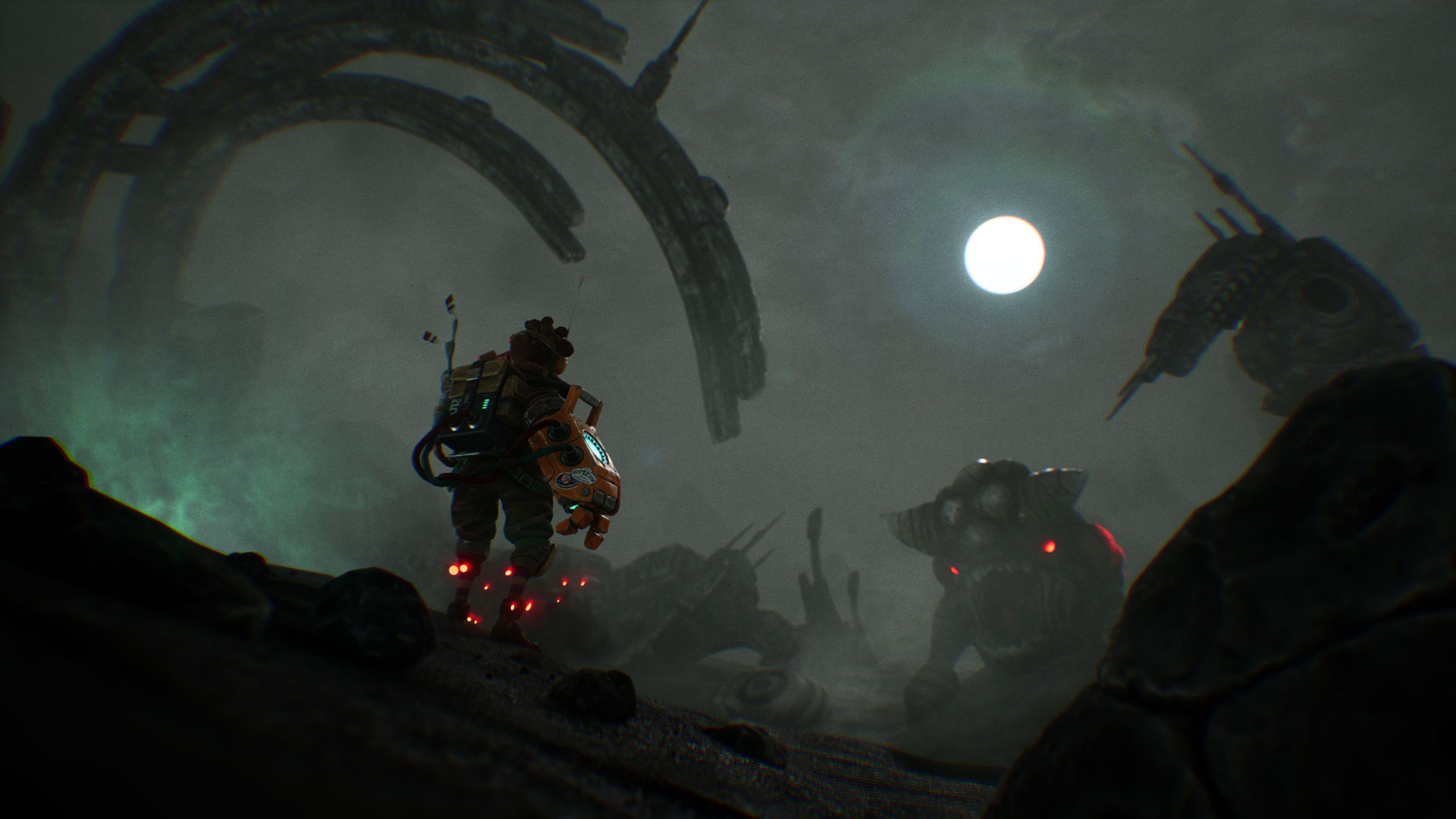
In all this, however, I remained invested in the back and forth between Rani and Becks, and the difficult decisions they’re pushed into because of their precarity. The warmth of their relationship and its soap-opera fluctuations dovetail neatly with some poignant big ideas about the ethics of their work. After all, they originally came to this planet not to clean it but to identify natural reserves for corporate extraction, and the blurred line between exploration and exploitation was often in the back of my mind as I hoovered up resources I’d just rescued from the black goo.
The point, of course (again, like Savage Planet), is that Becks and Rani are also exploited, forced to search for farmable energy, disregarding ecosystems, because they have no economic power to refuse. As much as Rani enjoys the sense of discovery, the circumstances behind it are far from ideal, and Becks’ constant worrying is a sign that Rani is putting herself in danger for other people’s profits. Smartly, it’s this reality that puts a strain on their future together as much as their personality differences, while also bringing them to question their wider responsibilities.

But in the end, I wanted The Gunk either to be a succinct exploration of its characters and themes, or a substantial action-adventure. As it is, at around six hours, it’s something in between. Or at least I needed the game loop to give me more of a feel for the characters’ journey - the excitement, the fear - than it could. It doesn’t nail the tension between the practical and the wondrous. Despite the colorful views and plot revelations, and my support for Rani and Becks, in this alien world, the challenges were too routine and familiar. And that goes for the gunk itself. If it’s supposed to be the star attraction that binds everything together, it’s not sticky enough.
Reviewed on PC with a code provided by the publisher.
Jon Bailes is a freelance games critic, author and social theorist. After completing a PhD in European Studies, he first wrote about games in his book Ideology and the Virtual City, and has since gone on to write features, reviews, and analysis for Edge, Washington Post, Wired, The Guardian, and many other publications. His gaming tastes were forged by old arcade games such as R-Type and classic JRPGs like Phantasy Star. These days he’s especially interested in games that tell stories in interesting ways, from Dark Souls to Celeste, or anything that offers something a little different.
